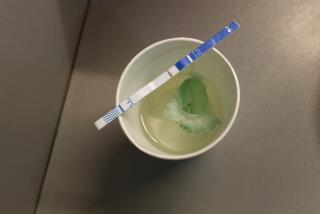Team makes Vicodin component in yeast, says ‘home brew’ opiates still not feasible
Earlier this summer, a flurry of scientific papers and news reports warned of the likely arrival, sometime soon, of “home brew heroin” -- opiate drugs that might be brewed using yeast, just like beer or wine are, possibly in the privacy of your own home.
Advances in bioengineering had allowed scientists to understand the complex processes within the poppy plant that convert sugar to morphine, and they were tweaking genes in yeast to allow many of the same reactions to take place in the lab. By June, all that was left to do was to string all of the steps together, an advance scientists figured would happen within a year or two.
This Thursday, less than two months later, a team of researchers at Stanford University reported in the journal Science that they had achieved the feat, using sugar to make two opioid compounds, thebaine and hydrocodone, using engineered yeast.
Biochemical engineer Christina Smolke and colleagues had been working on the problem of synthesizing opioids and other plant-based medicines in the lab for about a decade. Smolke said she saw pharmaceutical production as a key challenge for her field.
“I was in awe of the molecules that plants make. They do incredible and beautiful biochemistry,” she said. “But they do it in a way that’s inefficient. They’re not good production facilities.”
Her hope, and the hope of others, was to come up with a better way to make the molecules, like brewing them using yeast in batches. If successful, the thinking went, the lab-based manufacturing approach wouldn’t be vulnerable to weather and disease, the way poppy crops are -- allowing millions of people around the world who do not have sufficient access to painkilling drugs to get the medications they need. It could also open the door to development of better medications.
But there were technical problems to overcome. One was that scientists hadn’t figured out all of the steps involved in making morphine from glucose within the poppy plant -- in particular, how the poppy converts one compound called (S)-reticuline to another called (R)-reticuline. The research published earlier this summer described this process in poppies; in the Science paper released this week, Smolke’s team used a different approach, querying DNA databases, to also figure out how that process worked.
Another technical challenge Smolke’s group addressed was maintaining efficiency in the process as they stringed all of the steps together. Individual steps in the synthesis process that were very inefficient had to be re-engineered to keep them from bogging down the entire process.
In the end, the team engineered yeast to produce two opioid compounds. First, they made thebaine, a starting material for higher-value drugs like hydrocodone and oxycodone. Poisonous on its own, it would not be a substance addicts would want. The team also made hydrocodone, which is a drug and a major component in Vicodin. Smolke said the purpose of producing hydrocodone was to show that yeast can be engineered to create a compound that a plant doesn’t have the cellular machinery to produce.
The yeast made tiny, tiny amounts of the opioids -- so small, Smolke said, that it would require thousands of gallons of yeast to make a single dose of medicine.
“Practically you could get more of these compounds from eating a poppy-seed bagel,” she said.
As a separate experiment, Smolke and two colleagues tried brewing thebaine under normal home brew conditions. Their yeast did not produce detectable levels of the compound, they wrote, in a paper posted on the bioRxiv preprint server, suggesting that “additional technical challenges, some of which are unknown and likely unrelated to optimized production in large-volume bioreactors, would need to be addressed for engineered yeast to ever realize home-brew biosynthesis of medicinal opiates at meaningful yields.”
Still, she said she agreed with scientists who’ve said they want to work together with regulators and law enforcement agencies to make a plan to deal with this emerging technology so that its benefits won’t be outweighed by potential abuses.
Kenneth Oye, a political scientist at MIT who was not involved in the research but who tracks this issue closely, praised the researchers for stopping short of producing heroin and morphine, in their experiments.
While noting that the work will still need refinement before it becomes a public health threat, he marveled at how quickly developments had been unfolding in bioengineering -- for morphine synthesis and other applications that would require policymakers to sit down with scientists and start planning ahead to get out ahead of technologies that can be used for beneficial and detrimental ends.
“The pace of biological engineering is faster than what was expected,” he said. “Why are things moving so fast, and what do you do about it?”
For more on science and health, follow me on Twitter: @LATerynbrown
ALSO:
Sierra Nevada parcel will test ways to reduce mega fires and increase snowpack
Jupiter’s methane-shrouded cousin spotted around distant star
For fat loss, low-fat diets beat low-carb diets handily, new research finds







